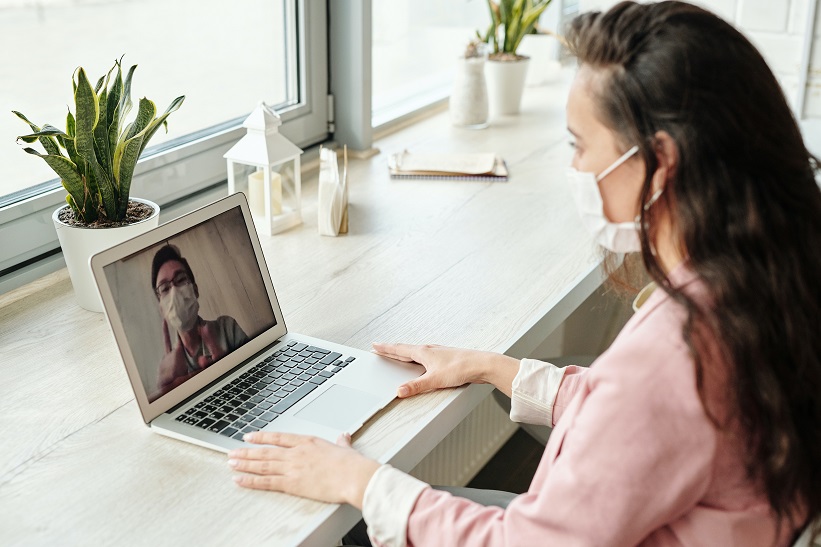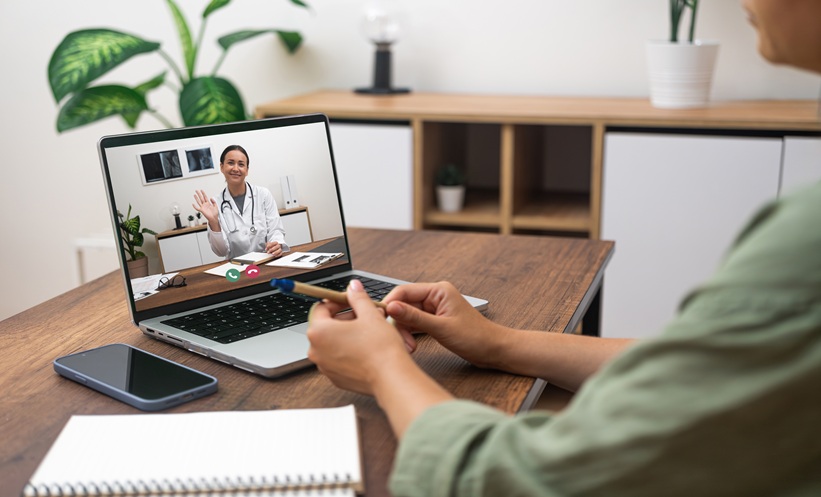Written by *Antoni Chan,1 Liz Van Rossen,2 Andrew Keat3 | 1. Department of Rheumatology, Royal Berkshire Hospital, Reading, UK. 2. Department of Research and Development, East Kent Hospital University Foundation Trust, Canterbury, UK. 3. Northwick Park Hospital, London, UK.† *Correspondence to [email protected]![]()
Niccolo Machiavelli and Winston Churchill have both been credited with the advice: “Never waste the opportunity offered by a good crisis.” It would be a mistake for clinicians to ignore this advice. Suddenly, faced by the COVID-19 pandemic, general practitioners and hospital specialists have had to identify patients at risk in a very short time; redeploy staff; and reduce clinic opening hours substantially by deciding which patients can consult by telephone, which must be seen, and which could safely wait, often without clear service statistics. Reduced clinician availability because of redeployment to the front-line, especially those who care for patients on potentially toxic or complex treatment regimens, must raise genuine fears about patient safety; this emphasises the need for rapid access to clear patient data. Our experience in rheumatology may well be applicable in other disciplines.
Part of this problem of working in the context of COVID-19 has been resolved in the UK1 and elsewhere2,3 by use of telephone or video virtual consultations, which avoid the risk of infection transmission but also, incidentally, may be quicker and less costly than traditional consultations. As foreseen in the National Health Service (NHS) Long Term Plan,4 in recent years virtual clinics have been developed widely, including in the primary care setting5 and in a range of other specialities including diabetes,6 dermatology,7 rheumatology,8 and psychiatry.9 In some countries, notably the USA, telemedicine has allowed for the sharing of visual data such as electrocardiographs and clinical imaging, which has found widespread use, especially in emergency care.10
Video technology has also been utilised by healthcare professionals such as physiotherapists11 for both consulting and leading therapy sessions. A variety of commercial video-conferencing systems are available but, as an ‘add-on’ to conventional clinics, they all have their weaknesses, including the need for IT training, security, and difficulties with integration with other NHS systems. NHS England has recently published guidance for remote consultations,12 with further advice published in the light of the coronavirus pandemic. This guidance, combined with the benefits of new technologies such as ‘NHS Attend Anywhere’, provide a sound basis for virtual consultations; however, important issues still need to be considered.
Experience in the UK has shown that the setting-up of virtual clinics in routine practice is challenging and may be unsuitable for many patients.13 However, having shown that it can be done in a time of crisis, it is timely for clinicians in a wide range of specialties to gather data now and to plan with urgency as to where we go from here. So, how can we use current experience to develop better, more efficient, and potentially less expensive clinical services?
Firstly, what can we learn about virtual consultations? What can be done well virtually? The answer may include follow-up of stable patients on long-term treatment, drug monitoring, pre-operative assessment, post-operative follow-up, and patient education. What are the strengths and weaknesses of telephone versus video consultations? Patient-related factors may be especially important here, such as their comfort with using the technology. It needs to be established whether viewing the other participant, be it the patient or clinician, is objectively helpful. For what types of patient would either of these approaches work well? In many specialties it may be that an initial face-to-face (F2F) meeting is essential, especially where physical examination is anticipated. Nevertheless, the increasing familiarity with virtual communication amongst younger adults might render this increasingly acceptable. It will be important to establish the extent to which patient choice should be a determining factor and evaluate patient compliance with both appointments and treatment. An inevitable element will also be an establishment of the added value of F2F consultation in a range of scenarios. Would these approaches work well for all members of the multidisciplinary team? Interactions such as drug monitoring (often managed by specialist nurses) and some physiotherapy consultations might work especially well with a video component. But how should such clinics be optimally supported?
In fact, the problems highlighted by the pandemic are not new. In the UK, long waiting times have long been an indicator of a stressed traditional system. Virtual clinics are part of the long-term solution, but not on their own. For optimum efficacy, a hybrid practice of both virtual and F2F clinics need to be combined with appropriate integrated databases, remote monitoring, and Patient Reported Outcome Measures (PROM), patient involvement, appropriate administration, and clinician buy-in.
Many services, including rheumatology, are increasingly basing management decisions on clinical databases and PROM, but most are not linked directly to hospital systems such as electronic patient records. Moreover, many of these databases are highly disease specific, designed for research, and time-consuming to use. In consequence, most clinical services are still unable to generate adequate outcome measures and quality data on which to base clinical, budgetary, and workforce decisions. Effective virtual clinics for patients with chronic disease require an integrated digital system that incorporates structured clinical datasets and PROM entered directly by patients.
A database system developed specifically for management of patients with spondyloarthritis was developed and piloted in Kent, UK14 and implemented in the rheumatology department at Royal Berkshire Hospital, Reading, UK in 2018. This was integrated with electronic patient records and could be used together with video software. It has allowed successful implementation of virtual clinics across specialties and built up substantial experience of combined virtual consultation with an integrated database. The current pandemic has allowed the system to be tested, with an increase from 5% to 45% of all rheumatology interactions now being virtual.
Changes to the mechanics of clinics, by using an integrated database, virtual PROM, and consultations, requires appropriate changes in administrative support. An effective, cohesive multi-disciplinary team (MDT) should now contain not only physicians, nurses, and physiotherapists, but also ‘data support managers,’ in place of conventional clinic support staff. Such a system also enables a triage of new referrals and urgent problems while allowing for data-driven communication between the medical team, patient, general practitioner, and other healthcare professionals; timely resolution of problems without unnecessary appointments; and rapid availability of information for drug monitoring and audit. The pairing of data management with service organisation introduces significant flexibility and efficiency into the way the MDT functions, as well as informing commissioning requirements, audit, and research opportunities.
Advocacy of virtual consultation benefits in terms of time, convenience, and cost must be seen as complementing traditional F2F consultation in a hybrid clinic set up. Just as it is vital to understand the place and value of virtual consulting, the same remains true of traditional F2F consulting. The therapeutic value of the ‘present,’ tangible clinician remains a key element of good clinical practice. In delivering holistic medicine, quite apart from the physical examination, touch, eye contact, and perception of nonverbal cues are vital, as is the establishment of trust between patient and clinician; it provides the option of meeting in a safe space where personal issues can be discussed privately. Virtual contact for acute illness may support a valuable triage function whilst allowing for minor problems to be dealt with without a F2F visit, albeit with a potential increased risk of overlooking rare but serious conditions. Moreover, adequate assessment by virtual means may still not achieve adequate reassurance of the patient and studies of the virtual primary care setting have shown that patients are less likely to raise issues spontaneously than in a conventional clinic setting.15 Clear guidelines are needed for identifying which patients should have the option to consult virtually and it will be vital to get the balance right between F2F and virtual consultations; this will require patient involvement at the design stage, as well as an acceptance of patient preference for individual consultations.
Irrespective of the consultation format, in the 21st century, validated, timely data are essential if both clinicians and patients are to feel safe. The most suitable clinician within the MDT is to be involved directly and vulnerable patients are to be identified quickly. Untoward events can be flagged directly with the appropriate clinician or data handler according to predetermined algorithms. Regular data collection is important across the spectrum of clinical work but may be of key value in subspecialty clinics, especially where new, expensive, or innovative treatments are in use. However, irrespective of the specialty, clinically led systems with strong technical support are now needed in the brave new world of hybrid clinic frameworks to integrate the many apps and software currently available. Inter-user operability with single sign-on is going to be key to successful uptake and buy-in from clinicians. Log-in fatigue resulting from multiple separate systems must be avoided to ensure long-term sustainability.
An essential element of such change is cost. The creation of data support managers in place of existing clerical posts and the introduction/adoption of nationwide data systems will carry an initial cost. The use of disease-specific and drug-related databases have thus far been largely industry-funded. However, the reduction in F2F clinics, reduced staff travel, and effective triaging will ultimately lead to work being done more efficiently, at greater convenience for the patient, and in less clinic space, thus achieving long-term cost effectiveness whilst improving quality of care.
The COVID-19 pandemic had provided us with an opportunity to modernise services and has shown that it can be done; the clock must be turned forward, not back.
References
- Gilbert AW et al. Rapid implementation of virtual clinics due to COVID-19: report and early evaluation of a quality improvement initiative. BMJ. 2020;9:e000985; doi:10.1136/ bmjoq-2020.
- Judd E et al. Virtually perfect? telemedicine for Covid-19. N Engl J Med. 2020;382:1679-81.
- Shenoy P et al. Switching to teleconsultation for rheumatology in the wake of the COVID-19 pandemic: feasibility and patient response in India. Clin Rheumatol. 2020; https://doi.org/10.1007/s10067-020-05200-6.
- National Health Service (NHS) England. NHS Long Term Plan. 2019. Available at: https://www.longtermplan.nhs.uk/. Last accessed: 5 August 2020.
- Greenhalgh T et al. Covid-19: a remote assessment in primary care. BMJ. 2020;368:m1182.
- Harris MA et al. Seeing is believing using Skype to improve diabetes outcomes in youth. Diabet Care. 2015;38:1427-34.
- Edwards N, Imison C. How can dermatology services meet current and future patient needs, while ensuring quality of care is not compromised and access is equitable across the UK? 2014. Available at: https://www.bad.org.uk/shared/get-file.ashx?id=2347&itemtype=document. Last accessed: 5 August 2020.
- 8. Harris C et al. Use of remote consultation in the management of stable patients receiving biological therapy for ankylosing spondylitis. Rheumatology (Oxford). 2015;54(1):i136.
- Choi NG et al. Telehealth problem-solving therapy for depressed low-income homebound older adults. Am J Geriatr Psychiatry. 2014;22:263-71.
- Langabeer J et al Telehealth-enabled emergency medical services program reduces ambulance transport to urban emergency departments. West J Emerg Med. 2016;17(6):713-20.
- Martin M et al. The usability of electronic patient reported outcomes prior to rheumatology clinic attendance: could this be the future in managing demand on rheumatology services? Rheumatology (Oxford). 2019;58(Suppl 3): https://doi.org/10.1093/rheumatology/kez105.030.
- National Health Service (NHS) England. Clinical guide for the management of remote consultations and remote working in secondary care during the coronavirus pandemic. Specialty guides for patient management during the coronavirus pandemic. 2020. Available at: https://www.england.nhs.uk/coronavirus/wp-content/uploads/sites/52/2020/03/C0044-Specialty-Guide-Virtual-Working-and-Coronavirus-27-March-20.pdf. Last accessed: 5 August 2020.
- Hewitt H et al. Comparison of face-to-face and telephone consultations in primary care: qualitative analysis. Br J Gen Pract. 2010;60:e201-12: doi:10.3399/bjgp10X501831.
- Van Rossen L, Withrington R. Improving the standard of care for people with ankylosing spondylitis and a new approach to developing specialist ESP-Led AS Clinics. Musculoskeletal Care. 2012;10(3):171-7.
- McKinstry B et al. Telephone consulting in primary care: a triangulated qualitative study of patients and providers. Br J Gen Pract. 2009;59:e209-18: doi:10.3399/bjgp09X420941.
†Dr Keat is now retired.








